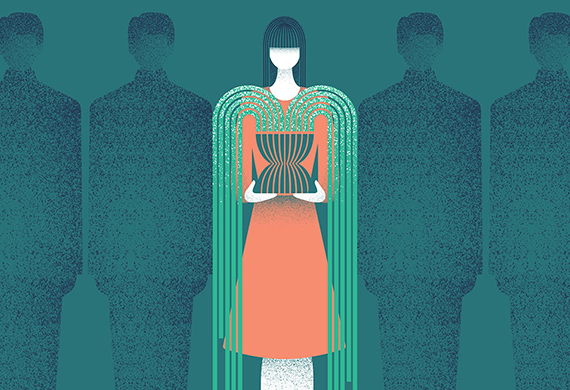
Understanding the Underrepresentation of South Asian Women in Leadership Roles
By: WE Staff
Gender equality is everyone’s business and a smart investment. The qualities of real leaders that have come to define women's identities are actually the main capital that needs to be further developed through a variety of educational initiatives, support, and training in order to advance knowledge, insight, organisational abilities, and self-assurance.
As businesswomen throughout the world forge ahead and speak about how the gender gap is closing, a survey questioned Asian business leaders whether they believe organisations are doing enough to increase female representation at the senior level. In a more recent poll, the ASEAN Gender Outlook 2021, only 24% of middle and senior management positions in the business sector were held by women. Asia continues to lag behind the rest of the world in terms of the percentage of female board members and female CEOs.
Asia's swift economic development over the past two decades has contributed to the decline of gender inequality in many nations. There is, however, still much room for development. Asia has the most female heads of state (more than any other area). Most, however, are not caused by gender equality but rather familial or dynastic relationships. Even while women's responsibilities as change-makers and leaders are becoming more widely acknowledged in the ASEAN area, more work needs to be done to highlight how they can boost productivity, improve ecosystem conservation, and foster more equitable and sustainable development.
Why are Women Underrepresented in Leadership Roles in South Asian regions?
The gender equality and levels of female labour participation tend to be the lowest in certain Asian nations with the greatest human development indices. That indicates that factors that make Asian women tend to stay the way a woman can sustain her ambition and motivation have not been investments in human development for women. In many situations, women handle all the work, although they serve as the head's representative, who is typically a man. Women frequently fall behind or are disregarded because of the low traditional leadership roles. Second, the organization's policies do not support women. For women whose leadership pathways tend to differ from those of men, there is no autonomy, mentoring, or support. The absence of women's own motivation is the third element.
The Association of Southeast Asian Nations (ASEAN) members must step up efforts to address the low number of women holding leadership positions in a variety of societal spheres; otherwise, they run the risk of preventing the region from reaching its full potential for recovery and sustainable growth.
“Gender equality is everyone’s business and a smart investment. Leadership positions and decision-making power for women are crucial to ensure that their voices are heard and their roles are acknowledged and harnessed both in public and private sectors of ASEAN,” said H.E.Dr. IngKanthaPhavi, Minister of Women’s Affairs, Cambodia.
To encourage a more equitable recovery from the pandemic in ASEAN nations, it is crucial to include more women in leadership positions. The discriminatory effects of COVID-19 and the crucial part that women played in the response are being acknowledged more and more. As stated by Sarah Knibbs, Regional Director, a.i. of UN Women in Asia and the Pacific, "We need to make sure they can continue to engage and have a bigger leadership role in the COVID-19 rehabilitation."
Proportion of Female Business Executives across Industries
According to the study, the ten ASEAN nations as a whole: In contrast to middle and senior management, where the number of women is substantially lower at 26%, the percentage of women managers only increased by 2 percentage points over the course of 20 years, from 39% in 2000 to 41% in 2020.
Women hold 22% of the seats in parliament, but are frequently restricted to chairing committees focused on gender equality and women's issues.
Although women make up 67% of healthcare workers, the first responders to the pandemic, only 11% of chief executive officers in the largest hospitals in the area are female, and all of ASEAN's health ministers, with the exception of Viet Nam's, are men.
In 2020, just 6% of environment and related ministries were led by women. Indigenous women, who are often the custodians of traditional ecological knowledge, may be able to support environmental protection with more opportunities to participate in environmental decision-making.
Why women should hold leadership positions
Although we have made tremendous progress toward promoting more women to leadership positions, there is still a long way to go in the region. According to the Women Board Directors of Asia report by Corporate Women Directors International, Asia trails behind in terms of women leadership (12.8%) when compared to other regions like Northern Europe (35.6%), Western Europe (23.6%), and US/Canada (20.9%).
Since diversified senior leadership benefits businesses, this must change. Businesses and organisations must provide a distinctive and compelling end-to-end customer experience in order to succeed and capture possibilities in the modern digital economy. To this purpose, it is crucial to comprehend the customer journey of various target audiences, which is more difficult if the leadership is made up of a homogeneous set of people from the same background. Gender diversity and intelligence can enhance the current leadership team with new talents and strengths while also bringing a refreshingly different perspective to the table.
Simply put, innovation for the future, a greater understanding of client needs, and continued corporate success all depend on diversity of opinion and genuine inclusiveness.
A diverse board performs better than one without
Diversity on boards is unquestionably beneficial to business. A more cohesive workforce is produced by fostering an inclusive culture, which also increases talent and the creative thinking that will move the company forward. Organizations are prevented from utilising all of the resources available for innovation and growth by unconscious bias and a lack of inclusion. People that operate in varied environments are aware that they are respected for who they are. Differences are not only accepted but frequently appreciated, which promotes a lively exchange of ideas and points of view.
What needs to be done?
The qualities of real leaders that have come to define women's identities are actually the main capital that needs to be further developed through a variety of educational initiatives, support, and training in order to advance knowledge, insight, organisational abilities, and self-assurance. Women leaders must then be created. Women are well-positioned to take use of these advantages to advance in leadership positions due to their willingness and capacity to adapt and build higher abilities in the areas of emotional intelligence, empowerment, and power of influence. In order to address the crisis of confidence in the women's leadership, Southeast Asian nations, particularly those with low human development indices, must start to acknowledge the need for a state led by women leaders who have the potential to represent a number of authentic leadership criteria.






